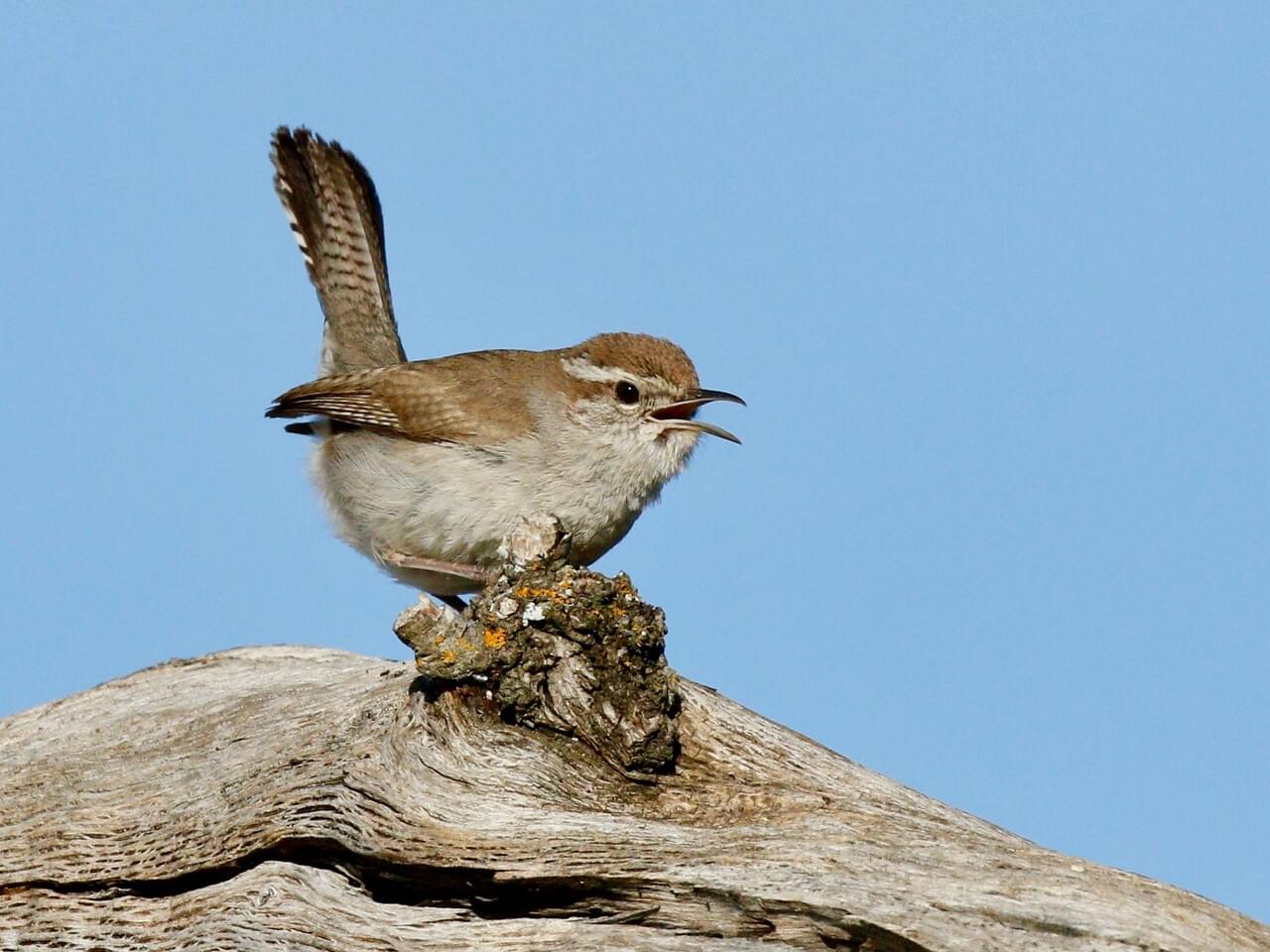Bewick’s Wren
Bewick’s Wren
(Thryomanes bewickii)


Bewick's Wren nest
Photo © René Corado

Bewick's Wren eggs
Photo © René Corado
Song
© Wil Hershberger / Macaulay Library
Song
© Gregory Budney / Macaulay Library
Song
© Bruce Rideout / Macaulay Library
Song
© Bob McGuire / Macaulay Library
Calls
© Paul Marvin / Macaulay Library
Calls
© Paul Fenwick / Macaulay Library
Calls
© Jay McGowan / Macaulay Library
Calls
© Hope Batcheller / Macaulay Library
Calls
© Matthew D. Medler / Macaulay Library
Where To Find It

Source: Birds of the World
Habitats
Substrates
What You'll Find
Nest Type
Chick
Clutch Size
3
5
7
8
Nest Height
30 ft
0.5 ft
Nesting Statistics
Incubation Period
14-16
days
days
Brooding Period
14-16
days
days
Useful Hints
- At the sound of approaching humans, a female Bewick’s Wren incubating eggs usually flushes quietly from her nest cavity, but remains nearby and scolds. Some females, however, sit tightly on their eggs even when disturbed.
- The open cup may be lined with feathers, wool, hair, or plant down, with a final inner lining of snakeskin.
- Bewick’s Wrens usually build their nests in cavities or on ledges within 30 feet of the ground. Males often begin the process, with the female contributing equally by the end.









